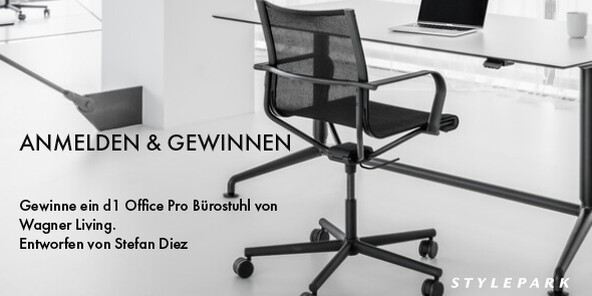
Where function takes center stage in the design, the means justify the end. Functionalism as summarized by US architect Louis H. Sullivan in 1896 in his renowned adage that “form follows function” accords the purpose absolute priority such that all artistic liberty and thus the object’s beauty bows down before it. In a nutshell: For a functionalist, if it is practical and fulfills its purpose then it’s beautiful.
However much design has always insisted that the things or appliances designed should always fulfil the purpose they are intended to have, Sullivan’s popular quip has forever triggered annoyance among designers and, when post-Modernism popped up on the horizon of history, it brought any number of heretics into the fray. While all the talk of “form follows emotion”, “form follows concept”, “form follows fun” or “form follows poetry” was more or less ironic, even in opposition design remained stuck in a dogmatic rut, namely of believing that form requires a brief that it should logically follow. And beauty rarely does that. Not that this even touches on the question whether at the object level you can make any sort of meaningful distinction between form and function. Or whether with functionalism design did not subordinate itself to the (technical) functions in order to flee the clutches of the arts&crafts boys. The fact that in doing so it ran the risk of practicing a dubious Platonism is another matter altogether. Is a chair bereft of its form actually still a chair?
Be that as it may, there is an object that with quite marvelous simplicity puts paid to functionalism, which still ghosts around so many design debates for all the swansongs sung to it. One that undermines its conditions and contradictions with both precision and irony: Gaetano Pesce’s “Vesuvio” espresso maker.
Gaetano Pesce, born in 1939 in La Spezia, is an architect, designer and artist who had repeatedly proved to be a master of personalizing mass production. He’s never been interested in simply designing things that are only practical and functional. Essentially, he doesn’t design things, he visualizes the stance he has on them. Which means that his sofas, to take one example, look like a sunset over Manhattan or a mountain massif complete with lake and wtaerfall.
Now, as regards Pesce’s “Vesuvio” and Functionalism, things are as follows: What is the function of a mocca maker, called a caffettiera or simply a Moka in Italian? Quite simple: When heated on a stove the water in the lower section of the pot starts to turn into steam. This creates excess pressure which pushes the hot water through the coffee powder into a funnel. The coffee then flows through a fine sieve in the lower section of the pot’s upper chamber, rises up the little pipe thanks to the pressure and runs out into the upper chamber. Hey presto, espresso. No crema, admittedly, which is why the small steamers are wrongly called espresso makers.
Simple Italian versions of the Caffettiera tend to be octagonal and made of cast aluminum. “Vesuvio”, by contrast, as the name itself suggests, is shaped like a volcano about to erupt. A mountain massif the tip of which has been blown away leaving a crater full of lava glowing red, above which a cloud of steam and ash floats. Which is completely correct in terms of “form follows function” as the way the mocca maker functions corresponds exactly to that of a minor volcanic eruption. Because in a volcano, often at a depth of about 100 kilometers, where the temperature is between 1,000 and 1,300° C, the pressure rises owing to water turning to steam, rock melting and gases being released. Whereupon liquid magma rises up the fissures and crevices until, should the pressure pass the critical point, the volcano erupts.
So the appropriate shape for a mocca maker in functionalist terms is that of a volcano in the process of erupting – and that’s exactly the shape Gaetano Pesce chose. Which blows Functionalism just as sweetly apart as the erupütion does the tip of the volcano. Quod erat demonstrandum.
Espresso maker “Vesuvio”
Design: Gaetano Pesce, 1993
Manufacturer: Zani & Zani
Materials: aluminum, plastic
MORE on Stylepark:
Found object: Mother’s lap is forty years old! The Up series designed in 1968 by Gaetano Pesce for B&B Italia has been revamped to celebrate its anniversary.
(15 June 2009)





